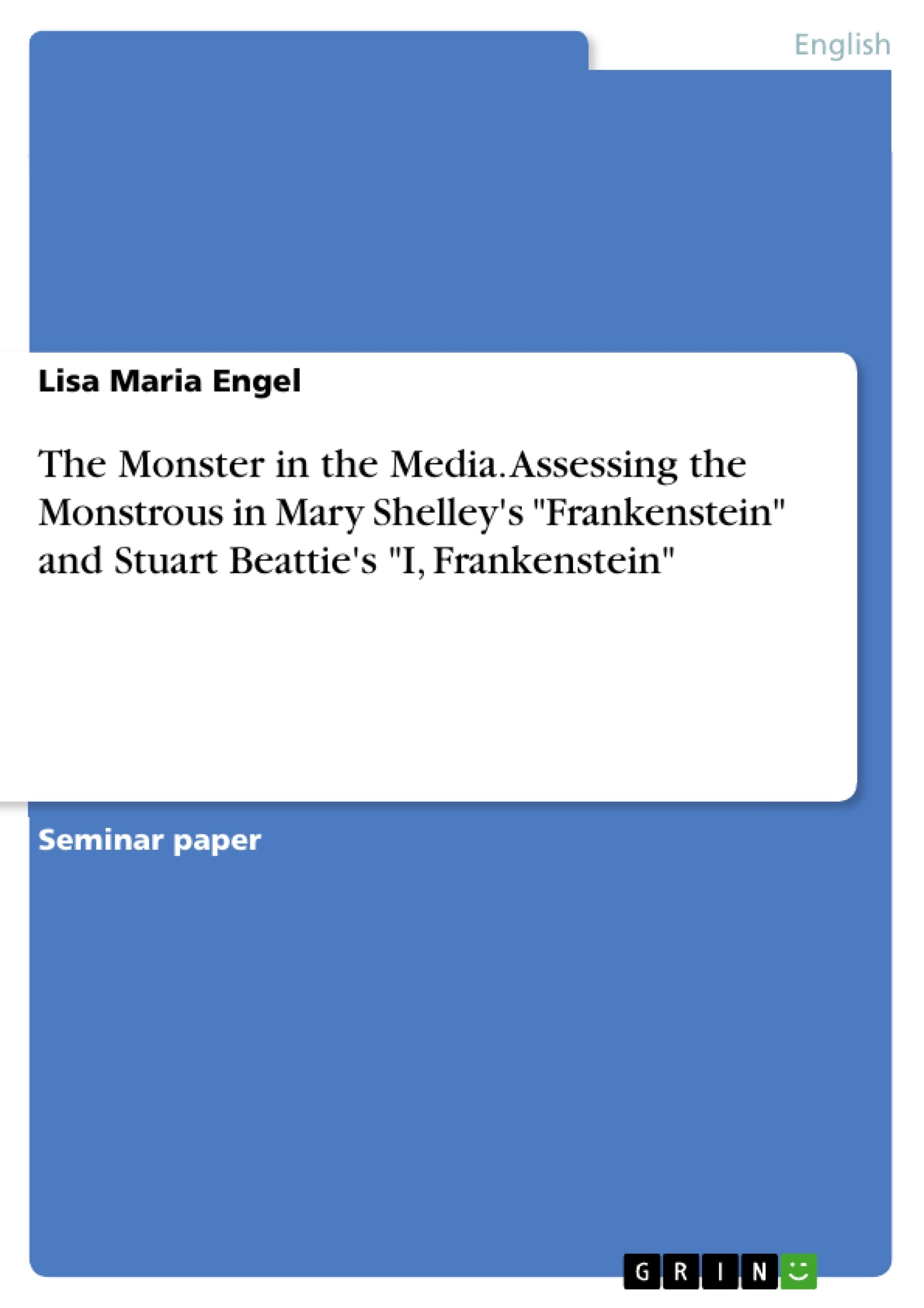Using the example of Mary Shelley’s "Frankenstein" (1818) and the contemporary film "I, Frankenstein" (2014), this term paper will examine the question if the way monstrosity is perceived and defined actually is influenced by and dependent on the society’s value systems and anxieties. Therefore, it will be investigated what differences can be found in the portrayal of monstrosity in the 19th century novel and the contemporary film, and from what circumstances these differences might derive. In order to do so, it has to be disclosed, who or what poses as the monster in the novel and the film, and which anxieties affect the respective society. Hence, this term paper first of all provides some selected approaches to monsters and monstrosity. Next Mary Shelley’s novel "Frankenstein" as well as Stuart Beattie’s "I, Frankenstein" will be shortly summarized, analyzed, and compared with respect to their cultural background and the introduced criteria that form monstrosity. Finally, the findings will be summarized and evaluated with regard to the investigated questions.
Table of Contents
- Introduction
- Defining "Monster"
- The Criterion of Appearance
- The Criterion of Behavior or Character
- The Criterion of Effect
- Assessing the Monstrous in Frankenstein and I, Frankenstein
- Summaries of Frankenstein and I, Frankenstein
- Frankenstein
- I, Frankenstein
- Application of the Criterion of Appearance
- Application of the Criterion of Behavior or Character
- Application of the Criterion of Effect
- Conclusion
Objectives and Key Themes
This term paper examines the concept of monstrosity, exploring how its perception and definition are influenced by societal values and anxieties. The primary goal is to analyze the portrayal of monstrosity in Mary Shelley's *Frankenstein* (1818) and Stuart Beattie's *I, Frankenstein* (2014) and determine how these portrayals reflect the anxieties and values of their respective historical contexts.- The evolution and fluidity of the definition of monstrosity
- The role of societal anxieties in shaping the perception of monsters
- The relationship between physical appearance and the perception of monstrosity
- The impact of cultural background on the portrayal of monsters in literature and film
- The distinction between monstrous appearance and behavior, and their contribution to the definition of the monster
Chapter Summaries
The introduction establishes the context for the paper by examining Robin Wood's perspective on the horror genre and its connection to societal anxieties. It highlights the connection between monsters and cultural and historical background, suggesting that the definition of monstrosity is constantly changing. The introduction also outlines the paper's objective to investigate the influence of societal values on the perception of monstrosity.The first chapter, "Defining 'Monster'," provides a comprehensive overview of the various criteria used to define a monster. It analyzes the definition of "Monster" from the *Random House Unabridged Dictionary*, identifying three key criteria: appearance, behavior or character, and effect. The chapter then delves into the criterion of appearance, examining the historical significance of physiognomy and how it influences our perception of monstrosity.
The second chapter, "Assessing the Monstrous in Frankenstein and I, Frankenstein," focuses on the application of these criteria to the two chosen texts. It provides a brief summary of each text and then analyzes the portrayal of monstrosity in *Frankenstein* and *I, Frankenstein* through the lens of the three criteria discussed in the previous chapter.
Keywords
The main focus of this term paper lies on the examination of monstrosity as a dynamic and fluid concept, influenced by societal values and anxieties. It investigates the portrayal of monsters in literary and cinematic works, using *Frankenstein* and *I, Frankenstein* as case studies. The key terms and concepts analyzed include: monstrosity, appearance, behavior, effect, physiognomy, cultural background, societal anxieties, and historical context.- Quote paper
- Lisa Maria Engel (Author), 2014, The Monster in the Media. Assessing the Monstrous in Mary Shelley's "Frankenstein" and Stuart Beattie's "I, Frankenstein", Munich, GRIN Verlag, https://www.grin.com/document/287136



